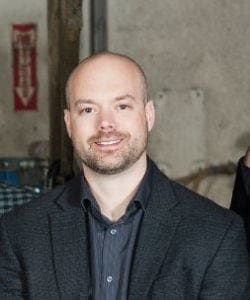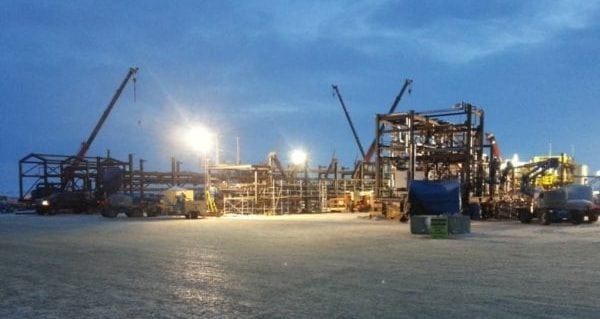Jesse Messom is president and CEO of Bigfoot Industrial Services Ltd.

Jesse Messom
Calgary’s Business: Can you give me a history of Bigfoot? How and when did it come into operation and how many people the company employs?
Messom: I founded Bigfoot Industrial Services in 2010. I started my millwright apprenticeship at 19 and obtained my journeyman ticket at 23. I demonstrated a strong mechanical aptitude, solid work ethic and leadership skills that were quickly picked up on by the company I was working for and just prior to obtaining my ticket was promoted to foreman.
As a foreman, I was responsible for managing crews of up to 30 millwrights and was accountable for ensuring each job was done on time and on budget.
I took a few entrepreneurial courses through Mount Royal throughout the years and I soon realized that being ‘on the tools’ wasn’t enough for me. I had an appetite and a knack for management and had wanted to be an entrepreneur since I was a kid.
At age 26, I made the decision to venture out on my own and launched Bigfoot Industrial out of the back of my Chevy pickup truck with one employee.
Eight years later, Bigfoot is a fully-integrated millwrighting, welding and fabrication/manufacturing and engineering company employing an average of 60 people.
CB: What exactly does the company do?
Messom: Bigfoot Industrial Services is a fully-integrated industrial services company. We provide industry-leading expertise in millwrighting, welding, fabrication and engineering. Our market focus is the industrial and commercial sectors, including but not limited to oil and gas, clean technology (design and manufacturing), material handling, distribution, food production, manufacturing and agricultural.
CB: What’s your company philosophy and vision?
Messom: Just do it right the first time. Our value proposition is simply quality workmanship. Our crew takes pride in what they do. We have some of the most talented millwrights and welders, who are 100 per cent aligned with our company’s vision, mission and values.
The machinery and equipment that our crews work on, whether it be demolition, fabrication, construction, installation, rigging or troubleshooting, quite often represents some of our clients’ largest capital investment in their business. We treat their equipment as if it were our own and we like to think of ourselves as solution-based and not transaction-based.
As a result, we have retained 95 per cent of our client base due to the high level of services provided to them since 2010. Our vision is to become the largest millwright, welding and manufacturing company in Western Canada within the next five years.
CB: How has the company navigated the challenges posed by a struggling economy since oil prices collapsed in late 2014?
Messom: From Bigfoot’s inception I knew the key to a healthy business was diversification. Being a born and raised Calgarian, I watched the Calgary economy go through peak and trough cycles several times. While I wanted my company to be involved in the oil and gas industry, I knew I could not solely depend on oil and gas for my clientele and did not want to place all of my eggs in one basket.
I set up the business to be multi-faceted and focused my efforts on a multitude of sectors. This strategy has worked exceptionally well – if one sector is struggling, I’ve been able to place my efforts in other sectors to balance the scales.
Like other entrepreneurs, I saw a void in the marketplace and seized the opportunity to carve my niche and found a way to just do and build things better. As a result, Bigfoot has averaged 100 per cent year-over-year growth since its inception. The company’s growth accelerated by 450 per cent within the last fiscal year alone. This was due to a strategic decision to invest into a multifaceted and disciplined management team comprised of a chief operating officer, a CFO, a field operations manager, and project management and estimating team.
I came to the strong realization through business coaching with Greg Forzani along with entrepreneurship courses taken through Mount Royal, as well as some strategic planning sessions with my sister, Kerri McGrath (now COO), that I needed to spend more time working on my business instead of in my business. I realized that it’s not viable nor is it feasible to do everything. I had to get out of my own way and start delegating for the business to grow.
Had I not come to that realization, I would be stuck being an employee to my company instead of leading my company. In early 2017, my new management team and I made the decision to restructure the company and devised a comprehensive marketing and sales plan with a goal to optimize Bigfoot’s brand awareness and to position Bigfoot as an authority in the marketplace. Even though money was tight because of the depressed market, I was able to see the benefit and return on investment. In hindsight, I don’t think I would’ve changed a thing as this investment has paid off three-fold from both a business and work-life-balance perspective.
Another arm of our diversification strategy that has helped Bigfoot weather the precipitous downturn has been the strategic decision to launch or acquire complementary services that are still within the company’s bailiwick. Since launching Bigfoot Industrial, the company has added a welding and fabrication division, a manufacturing division focused on forward-thinking innovation (clean technology) and an APEGA-registered engineering division.
These were services that company frequently outsourced and by bringing these services in-house, we are now able to better control the quality of our product and service offerings, as well as turnaround times.
This has made a big difference with our clients, as we are in essence a one-stop shop for them.
We have plans to launch an in-house machining division as well as an electrical division within the next two years.
CB: What are the biggest challenges you still face today?
Messom: With the rapid growth experienced over the last year, the company has run out of space, literally, and is in the market for a new 20,000-to-30,000-square-foot manufacturing facility. This places limitations on the volume of projects that it can take on at any given time.
As Bigfoot continues to morph from a singular-focused millwright services company into a fully-integrated industrial project management and multi-trade services provider, there will always be learnings with regards to how to more effectively and efficiently structure systems, processes, policies and procedures. Once implemented, these will mitigate and better insulate the company from future challenges; especially seeing as the company has started taking on more and more larger multimillion-dollar projects, with the proper management and trade services teams in place to execute on these larger projects.
With the evolution of the company and new management team transitioning into place, roles and responsibilities will need to be further delineated and defined as the organization works towards an ebb and flow. These are typical growing pains, and the good news is that Bigfoot has created a very communicative and autonomous culture, giving the management team a good handle on the company’s blind spots from both the ground level and from 5,000 miles up.
– Mario Toneguzzi
Respected business writer Mario Toneguzzi is a veteran Calgary-based journalist who worked for 35 years for the Calgary Herald in various capacities, including 12 years as a senior business writer.
![]() The views, opinions and positions expressed by columnists and contributors are the author’s alone. They do not inherently or expressly reflect the views, opinions and/or positions of our publication.
The views, opinions and positions expressed by columnists and contributors are the author’s alone. They do not inherently or expressly reflect the views, opinions and/or positions of our publication.
Calgary’s Business is a Troy Media Digital Solutions Associate website


